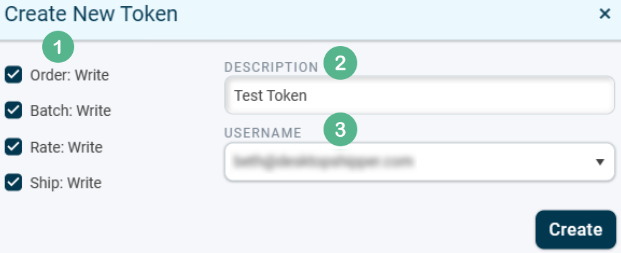This document provides an overview of how to establish a connection with the ShipWise API.
What is an API?
API stands for Application Programming Interface, it allows two softwares to talk to each other.
Note: Establishing a connection with the ShipWise API requires assistance from Implementation. Please submit a sales deal.
Why is an API useful?
APIs make it easy to integrate different systems and create seamless workflows. APIs can handle a large number of requests from different users or applications simultaneously, without compromising performance or reliability.
API Basics
Endpoints
An Endpoint is the place of interaction between applications. API (Application Programming Interface) refers to the whole set of protocols that allows communication between two systems while an endpoint is a URL that enables the API to gain access to resources on a server.
Available Endpoints:
https://api.shipwise.com/
https://testapi.shipwise.com/
Calls
GET- Retrieve resources from the server.
PUT- Update existing resource on the server.
POST- Create a resource on the server.
Parts of an API Call
Call- Message sent to a Server asking an API to provide a service or information.
Body- The full data set that is sent to the API to make a call.
Brackets- Represents start and stop.
Object- Provides a set of information.
Field- Variable within an object.
Common Call Examples
Rate and Ship: Quickly rate and produce labels with just one API call. Set up your service groups for rate shopping, then trigger the API to get labels based on preferred client ship methods.
Print: Reprint labels as needed
Void: Void the label in ShipWise’s database as well as with the carrier, when applicable.
Multi-box Support: Calculate the total shipping cost for a single shipment with multiple boxes, based on provided weight and dimensions.
International Forms: Generate and print any necessary customs forms or labels required for international shipments.
History Queries: Query the history of shipments created through the API.
Shipment Details: Query packages and get shipment status with ETA delivery time.
Tracking Events: View transit status and quickly access the carrier's site for more information.
Other tailored functionalities: Set rate markups or discounts, add additional shipping costs, personalize reference fields and headers, and automate returns label rules.
Generating a ShipWise API Token
- Navigate to Settings and select "API".

- Click "Create" in the upper right-hand corner.

1. Select the types of calls the customer will be making.
2. Name the Token.
3. Assign the Token to a username. Often times this is a username created specifically for using the API. Assigning the token to a username allows ShipWise to locate the token when needed.
- After the token is created, click "Copy Token to Clipboard".
To view all available calls and test them out, access our swagger site at https://api.shipwise.com/index.html
API Fields
![]()
